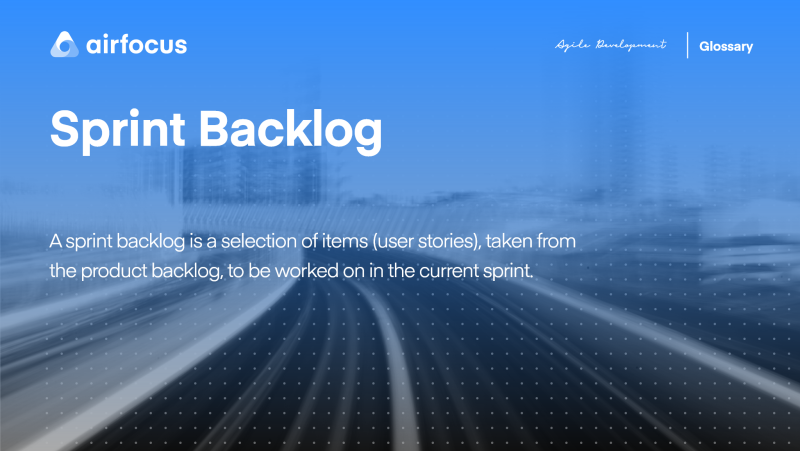Sprint Backlog
What is a sprint backlog?
Definition of a sprint backlog
A sprint backlog is a selection of items (user stories), taken from the product backlog, to be worked on in the current sprint.
Compiling a sprint backlog gives teams a clear vision of sprint success and provides the opportunity to discuss what’s possible, what needs prioritizing and what may have changed in the strategy since the last sprint.
How do you write a sprint backlog?
The first step in writing a sprint backlog has to be strategic analysis. Here, the software development team will analyze the highest priority items in the current product backlog.
Next, these items — usually written as user stories — will be transferred into the sprint backlog, where the team will list all the necessary tasks to achieve the user story. It’s a good idea to list the user stories in priority order, so the whole team is aligned on what needs to be done first.
Once all the items are in the list, the team needs to discuss the feasibility of each story and task within. The size and estimated effort taken to complete each task should be noted down, to help with sprint and resource planning.
Who is responsible for the sprint backlog?
In most teams, the sprint backlog is a shared responsibility. The scrum master, product owner, and development team should all collaborate to plan the sprint and make sure the tasks involved have realistic timeframes for development.
That being said, the development team should be responsible for keeping the product owner and scrum master informed of progress — if they start to slip behind, the wider team needs to know.
Because of the collaborative nature of a sprint backlog, some teams will capture the information in a shared spreadsheet, or somewhere else that is totally visible to everyone involved. However, these days there are other easier-to-use templates to help plan, prioritize and track the sprint backlog.
Advantages of using a sprint backlog
Spring backlogs add significant value to the development process, including:
Promoting achievable goals
It’s important that the development team helps decide the size and effort of each sprint backlog item, before assigning them within the group. After all, they are the ones who have to get all the work done! By empowering the development team to set and organize their workload, you minimize the risk of over-ambitious activities and staff burnout.
Ensuring accurate estimates
In a similar vein, the development team must provide time estimates for each item, based on the predicted speed of delivery. Doing so avoids impossible turnaround times being imposed, keeping the sprint running on schedule and protecting employee wellbeing. What’s more, with experience, the development team will be able to analyze their velocity in previous sprints, thereby having a better understanding of how many tasks they can clear in the current sprint.
Keeping the team focused
By agreeing to necessary tasks in the sprint backlog, team members can be sure they are working on the right thing, at the right time. Any other requirement, or task identified during the sprint, is beyond the current scope but can be discussed and added to the sprint backlog during the next sprint planning meeting.

General FAQ

Glossary categories
Experience the new way of doing product management

Experience the new way of doing product management








